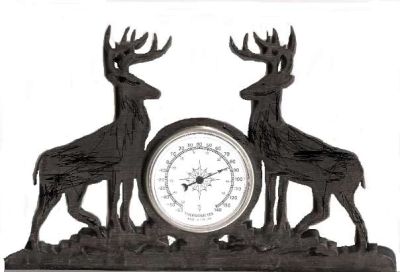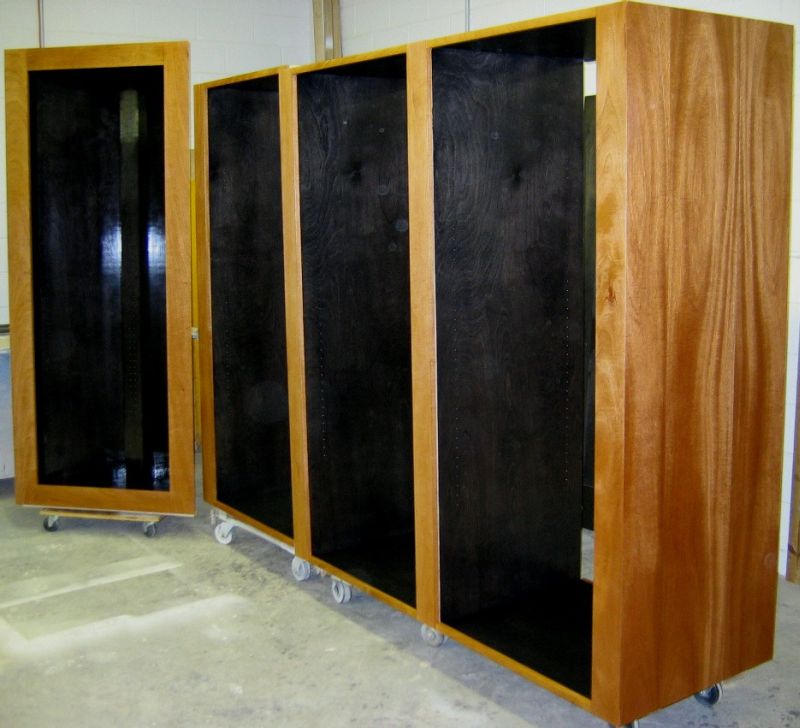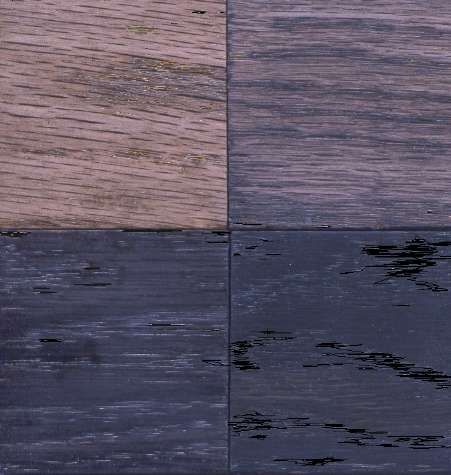Ebonizing Wood
Techniques for achieving a dark black "ebony" stain, with photo examples. July 24, 2006
Question
I need to create an ebonized affect. Does anyone have recommendations on what type of stain to use? What type of hardwood can best recreate an ebonized look?
Forum Responses
(Finishing Forum)
From contributor S:
Black dyes work best. Species: walnut, white oak, mahogany family.
From contributor M:
You need to do a color test, as some woods will show a reddish background with the black dye. In some cases, I may use a pigmented stain, and then a black dye shading stain. On other woods, I reverse the stains. Another option is to make up your own ebony dye from vinegar and steel wool, and add in some rusty nails or screws.
From contributor T:
Depends a bit on the size of the project too. Best black I've seen was the tires on a motorcycle marquetry which the maker did with a black magic marker. India ink also works well.
On contributor M's "liquid nightmare," the color is created by a reaction between the iron in the solution and the tannic acid in the wood, so a wood with more tannic acid will give a deeper black. Oak is high in tannins. You can add tannic acid to wood if it doesn't have enough to get the black you want. Just swab it with a strong brew of black tea and let it dry before swabbing it again with the iron solution. Also, you need to let the iron/vinegar solution brew for a few days in a loosely capped container and repeated applications will darken the result up to a point.
From contributor L:
I buy ink refill bottles for my inkjet printer. Has anyone tried using the refill black ink?
From contributor M:
You can get several shades from the vinegar dyes, from a light grey to a jet black. Yes, it does depend on the wood. As mentioned, the more tannin in the wood, the darker the wood will turn. On wood with little tannin, you can get several shades of yellows. It takes some testing, but it does work. Like with all new materials, you need to make up complete samples.
This photo was done with the ebony vinegar dye. As I said, it takes some testing to learn the way to make up the stain, and to work with the stain on the wood you're working with. If you use the right materials, the stain will take only several hours to turn black.
It's an option, also. Ebony wood is a black and brown colored wood. So it depends on what one calls ebony.

From Paul Snyder, forum technical advisor:
The type of wood depends on the project. It all depends on the final look you want and the use for the piece(s). The cabinets below have birch veneer ply on the insides and mahogany on the face and outsides. You can see the grain of the birch in the first cabinet the best (closest to the camera). In this case, the birch was basically the least expensive option and has interesting grain patterns.
To get an even color on the wood, I use a 3-step technique. First I spray a black dye without wiping. Then use a black wiping stain. Then seal the stain and spray a coat of finish with some black dye or pigment in it. With this technique, you can get a deep, dark ebony finish on any wood. There's more info at this link:
Staining and Blending Difficult Woods
If you use black pigment in the toner (colored finish), it only takes 1/2 - 1 ounce of lamp black pigment per gallon of thinned finish. Too much pigment will mute the grain. Dye is transparent.

Click here for full size image
From contributor M:
The panels show some colors that can be created by using the ebony vinegar dye stain. This dye stain is permanent, so be sure you make up samples before you apply the stain on your work. Always make up more stain then you need, so you can complete the work.

Click here for full size image


